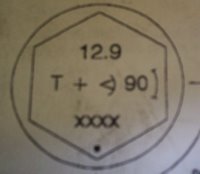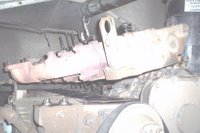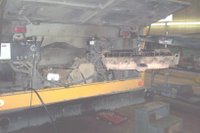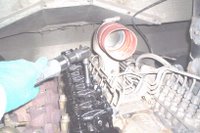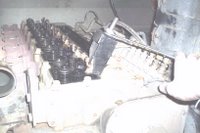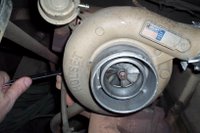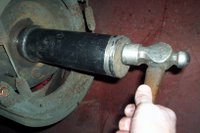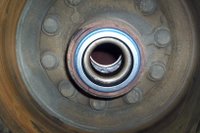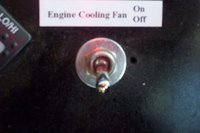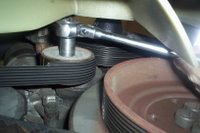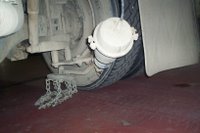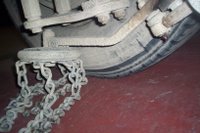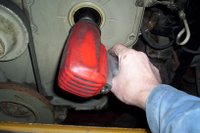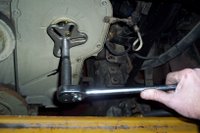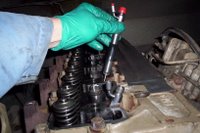 The injectors have been tested and ready for installation. Make sure the copper sealing washer is slid over the tip of the injector before installing, use a light grease to keep washer from sliding off the end. Once injector is slid into the bore of the head install injector hold-downs and retaining bolts. Torque to 18 ft. lbs.
The injectors have been tested and ready for installation. Make sure the copper sealing washer is slid over the tip of the injector before installing, use a light grease to keep washer from sliding off the end. Once injector is slid into the bore of the head install injector hold-downs and retaining bolts. Torque to 18 ft. lbs.  The injectors have been installed and torqued to specs. So the next operation is installing the air intake manifold and fuel injection lines. This is much easier with the rocker arm assemblies removed.
The injectors have been installed and torqued to specs. So the next operation is installing the air intake manifold and fuel injection lines. This is much easier with the rocker arm assemblies removed.
Four intake manifold bolts also serve as injection line hold-down bolts, torque intake manifold bolts to 18 ft. lbs. Once injection lines are tightened the fuel return lines can be fastened down with new copper sealing washers.
The rocker arms and pushrods can now be installed and torqued to 41 ft. lbs. Don't forget the oil manifold that sits underneath the rocker arms, it sends lubricating oil to the rocker arms and shafts.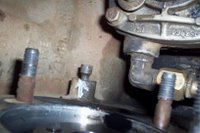 Bar engine over until timing pin engages with the camshaft gear, the engine is now on #1 cylinder Top Dead Center on the compression stroke. Timing pin is located under the injection pump.
Bar engine over until timing pin engages with the camshaft gear, the engine is now on #1 cylinder Top Dead Center on the compression stroke. Timing pin is located under the injection pump.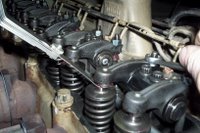 The Intake valves are adjusted to .012 while the Exhaust valves are adjusted to .024 clearance. The valves are Intake then Exhaust on each cylinder looking from the front of the engine.
The Intake valves are adjusted to .012 while the Exhaust valves are adjusted to .024 clearance. The valves are Intake then Exhaust on each cylinder looking from the front of the engine.
Rotate engine 360 degrees [remove timing pin first]
Adjust #3 #5 #6 intake valves and #2 #4 #6 exhaust valves
Roll the engine around again and re-check valve adjustment.

